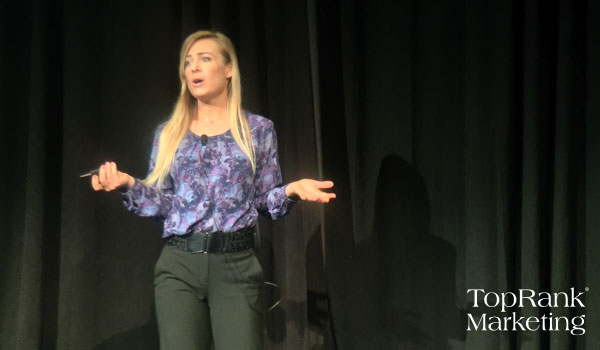
Last week at the Content2Conversion conference, Heidi Bullock, VP of Demand Generation at Marketo took the stage and covered a topic that is top of mind for all marketers. That is, how to create the right message at the right time to meet the needs of customers.
Today’s self-directed buyers typically go through up to 90% of their purchasing journey on their own. Which means that marketers need to find a way to build credibility, without even speaking with customers directly. Below we’ll discover some best practices for creating engaging to better meet the needs of self-directed buyers.
Content Marketing for Self-Directed Buyers
According to a 2016 report from MarketingProfs and Content Marketing Institute, B2B marketers list “producing engaging content” as their top challenge, followed closely by “measuring content effectiveness” and “producing content consistently”. To help with this top need, Heidi provided a formula for creating engaging content:
E = Relevant Content + Right Time +Personal
Let’s break down the different elements of that formula to see what changes can be made to your program to begin creating more engaging content.
Create Relevant Content
In the example Heidi provided, you’ll see how the team at Marketo creates different content for their different customer groups. That means, when someone in higher education is searching for a solution, they won’t find a generic message that is meant to apply to a bunch of different prospects across the board.
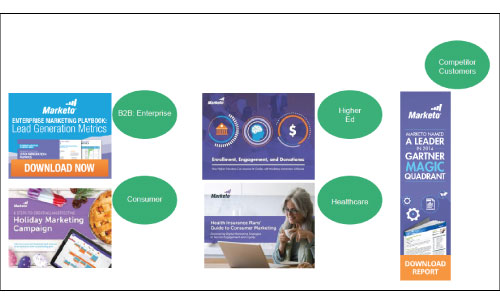
Additionally, you can follow these tips for creating more relevant and engaging content:
- Address a Need: Create content that shows you understand what readers care about.
- Be Relatable: Know your audience and speak in a language that they can connect with.
- Make a Point: Use content to make a point, and get to it quickly.
- Standout: Create content that differentiates you from your competition.
- Listen to Input: Information can be gathered from sales teams, social media websites and customers to create more engaging content.
You can also create a better experience for your customers by providing them different content types to consume and share such as:
- Webinars
- SlideShare Presentations
- Videos
- Blog Posts
- Podcasts
- Infographics
- Activity Books/Worksheets
- Articles
Present Content at the Right Time
Different content types and whether they are gated or un-gated should be mapped to the customer journey. Below are examples of early, middle and late stage content types and whether they should be gated or not:
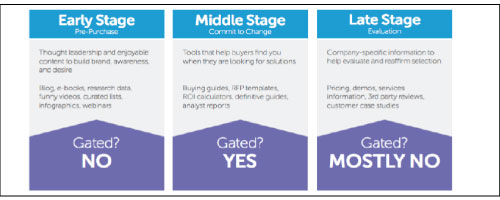
Marketers can implement lead scoring systems to rank leads in a way that helps determine sales-readiness. So, the type of content that your prospects are accessing can help shine a light on which stage of the buying cycle they are currently in.
Personalize the Content Experience
True execution and measurement of personalized content is still something that is very new to most marketers. However, a recent study from HubSpot found that personalized calls-to-action have a 42% higher conversion rate than those that are the same for all visitors.
Opportunities to personalize content exist in many places such as your website, video, social media, email and mobile. Other tactics such as retargeting have become increasingly popular, but results can be improved with the use of personalized retargeting as shown below.
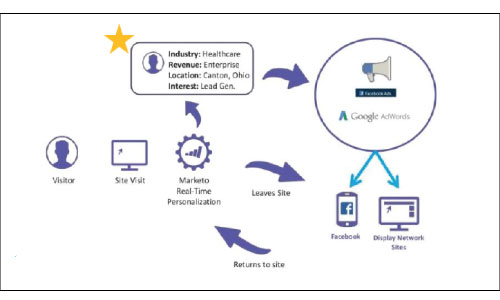
With the amount of information available, marketers can now begin to leverage the behaviors and profiles of both professionals and consumers by uncovering and incorporating the following information:
Professionals:
- Industry
- Organization
- Target Account
- Revenue/Size
- Region
- Persona
- Buying Stage
- Products Owned
Consumers:
- Geo-location
- Price Sensitivity
- Purchase History
- Buying Intent
- Engagement
- Customer Profile
- Offers Accepted
The Importance of Measuring Marketing ROI
While anyone will tell you measuring conversions from your marketing efforts is key, many marketers still overlook the importance of measuring the multiple touch points that customers Go through before finally converting. It’s very rare that a prospect will see one piece of content and then immediately hire a company. There is credibility and trust that is built up over time, from multiple sources that typically encourages that type of action.
Below is an example of a conversion that could happen over 3 months, and many touch points:
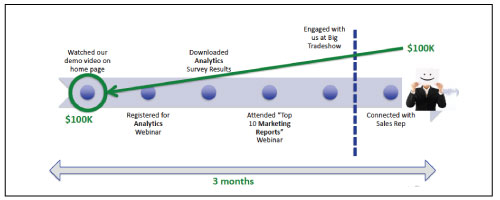
Each of these different steps should have a value attached to them so that marketers can track the potential in revenue for each piece of marketing material.
You can view Heidi’s full presentation below:
What Did We Learn?
In order for content marketing to be successful, you have to develop messages that are relevant to your audience, at the right time and in a way that is personalized to their needs. Using the tools available to listen across departments and directly with customers MUST inform your content strategy.
What have you found to be your biggest challenges in creating relevant engaging content for your audience?


